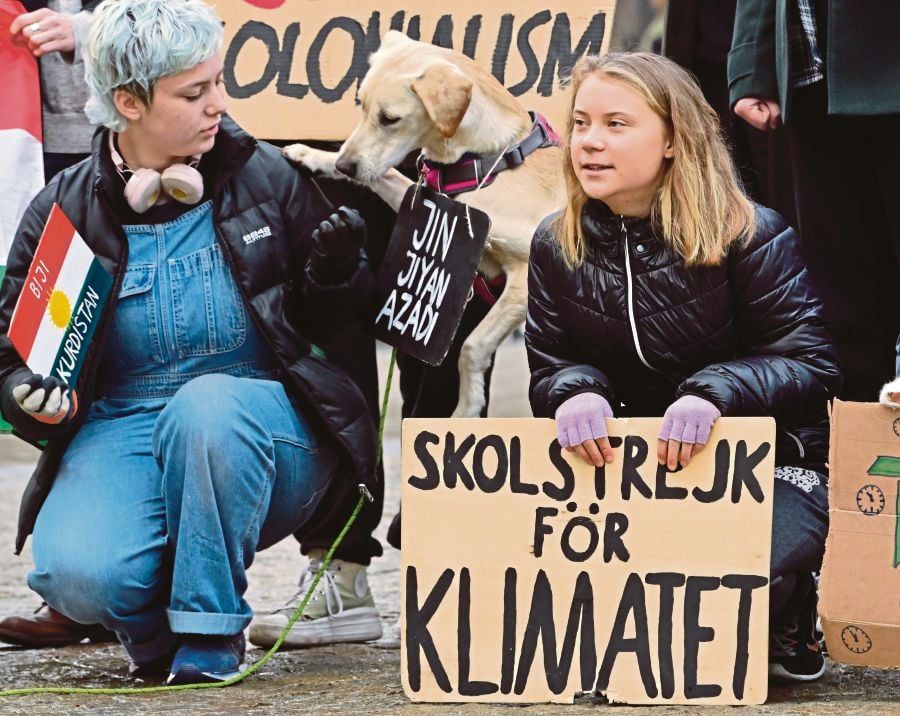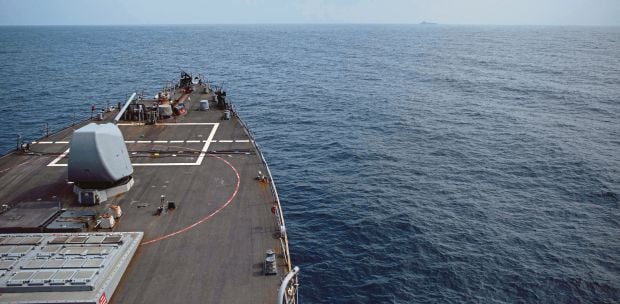ABOUT 1,000 years ago, a Viking woman named Ingrid built a wharf to load ships at a bay on the Swedish coast and commemorated the site with a looping runic inscription on a grey boulder.
Today, Ingrid's harbour, surrounded by birch and pine trees, is high and dry, on land 5m above sea level and 20km inland from coastal Stockholm, on the Baltic Sea.
These days, yellow cranes, barges and fleets of bulldozers, trucks and other construction machinery clog the heart of Stockholm — a sign that even Sweden's luck as a bastion against rising oceans is running out.
The country is spending 11.5 billion Swedish crowns (US$1 billion) to upgrade water-control gates and locks in an effort to keep Lake Mälaren — a source of drinking water for 2 million people — protected from the Baltic Sea at the point the two meet in Stockholm.
During storm surges, Slussen's gates will prevent salty Baltic water from reaching the 120km-long freshwater lake. Another key function of the project is to channel excess water from the lake out to sea after heavy rains or the spring snow melt, to prevent flooding.
"We're lucky to have this post-glacial uplift," said Sofie Schold, an expert on rising oceans at the Swedish Meteorological and Hydrological Institute.
The country has gained about 10,000 sq km of land — an area about the size of Jamaica — since Viking times, experts say.
But, the pace is slowing, and "Sweden now definitely has headaches about rising sea levels", Schold said.
Global temperatures have risen more than 1.2° Celsius since preindustrial times and are now swiftly approaching the 1.5°C mark that scientists fear could herald a transition to far costlier and deadlier climate change impacts.
The 2015 Paris Agreement, a pact among almost 200 nations, set a goal of limiting global warming to "well below" 2°C while "pursuing efforts" for 1.5°C.
But, with fossil fuel use still rising globally despite pledges to slash emissions, 1.5°C of warming could be passed within a decade, top climate scientists say.
Last year, the Intergovernmental Panel on Climate Change said global sea level rise might be limited to 30cm this century if emissions are slashed to meet the 1.5°C goal.
If emissions remain high, the rise could be up to a metre, it said.
It also warned that seas could rise almost 2m if higher emissions drove the collapse of ice sheets in Antarctica and Greenland.
Worryingly, a study in the journal Science in August estimated that Greenland and West Antarctica, which together lock up ice equivalent to about 10m of sea level rise, could pass a "tipping point" at just 1.5°C, triggering an irreversible meltdown that would redraw the world's coastlines.
But, smaller increases in sea level rise already present a growing threat to many low-lying cities and countries, particularly as wilder weather drives stronger storm surges of salty water inland.
For many of the 39 members of the Alliance of Small Island States (AOSIS), sea level rise is today an acute risk to coastal communities, vital infrastructure and important economic pillars such as agriculture and tourism.
In the south Pacific island of Tuvalu, for instance, "groundwater is no longer drinkable, saltwater intrusion damages crops, fisheries are dwindling, and families are more prone to water-borne disease", said AOSIS chair, Walton Webson, of Antigua and Barbuda.
Fiji, another Pacific island nation, spent about US$500,000 to relocate a first community, Vunidogoloa, away from the coast in 2014, and plans to move more than 40 others inland.
"AOSIS has long championed '1.5° to stay alive', and it is devastating to see this goal faltering due to the lack of ambition from some industrialised countries," he said.
In Stockholm, the new Slussen Lake-protection project, now under construction, will include cafes, bars, bridges, roads and metro upgrades.
Signs around the huge site warn local people that "Slussen is not built in a day".
In Sweden "luck is running out but they are doing something about it now", said David Armstrong McKay, lead author of the tipping points study at the University of Exeter and a researcher at Stockholm University.
For now, "very few are taking this into account", he said.
The writer is from the Reuters news agency





